Windsurfing is potentially dangerous, and the risks have various origins.
The good news is that the vast majority of these risks can be greatly reduced or outright avoided with precaution and by knowing what to pay attention to.
Once you’ve read this article, you will be able to enjoy your favorite sport much more safely.
- 1. Faulty Equipment
- 2. Not Knowing the Right of Way
- 3. Crashing Into Other People
- 4. Not Being Familiar With the Spot
- 5. Not Being Familiar With Basic Safety Procedures
- 6. Going Out in Offshore Winds
- 7. Going Out Alone
- 8. Not Having Checked the Forecast
- 9. Windsurfing When It’s Too Windy
- 10. Overestimating Your Abilities
- 11. Going Out in Thunderstorms
- 12. Windsurfing in the Dark
- 13. Underestimating the Elements
- 14. Crashing & Hurting Yourself
- Conclusion
- You Might Also Like…
1. Faulty Equipment
This one is a risk that may already be present while you’re still on the beach. Many beginners and even intermediates don’t bother checking their equipment, and that’s a mistake.
If you haven’t rigged the equipment yourself (where you would be much more likely to notice equipment defects), then start forming the habit of always checking your equipment before going out on the water.
This includes checking:
- your board for cracks, holes or fissures
- your uphaul and downhaul ropes
- the harness lines
- the boom
- the sail for cracks or holes
- the power joint for fissures
- the fin for a tight fit and cracks
Understand the importance of this habit: if any of these elements break while you’re far away from the shore, you will be in trouble faster than you can say “tack”.
How to reduce this risk:
Get in the habit of checking your equipment before each session – every time. If there’s any visible sign of damage or even of beginning wear or tear, replace the part with a new one.
2. Not Knowing the Right of Way
The right of way is like the rule of the road of windsurfing. If you don’t know the rules, you should not be allowed to windsurf, just like you wouldn’t be allowed to drive a car. It’s simply too dangerous.
Colliding with another windsurfer is probably one of the most dangerous accidents that could happen and lead to some serious injuries.
Fortunately, it’s also easy to avoid. Whoever has their right hand in front of them (in the direction they’re going) has the right of way.
If your left hand is closer to the mast, then you must yield to oncoming windsurfers.
If both are going in the same direction, then whoever can see the other person (without looking behind) has to yield. That should be obvious, since it’s much harder to see someone who’s behind your back.
Having said all this: never insist on your right of way. Better safe than sorry. Always keep ample distance to everyone, look around before maneuvers and slow down or give way when in doubt.
How to avoid this risk:
Know the “traffic rules” and obey them. Be cautious, keep your distance to others and look around before turning.
3. Crashing Into Other People
As we’ve just seen, crashing into other people can lead to serious injuries, so do your best to avoid this at all costs.
However, this risk does not only stem from not knowing the right of way. You can also crash into non-windsurfing people.
Most of the time, this could be snorkelers or swimmers. Windsurfers hitting snorkelers or surfacing divers has already lead to several deadly accidents, so be ultra-careful about this.
In most places, buoys clearly separate swimming zones, so make sure to not blast through such no-go zones.
Don’t assume you’d always be able to see someone in the water, because you wouldn’t. Only a tiny snorkel sticking out above the water surface is practically invisible.
People may temporarily dive underwater or be completely obscured by waves, so steer well clear of swimmer or diver areas.
Besides that, be mindful of people crossing over into designated windsurfing areas, which happens quite often as well.
How to avoid this risk:
Check to see if there are bathers, snorkelers, swimmers or divers around, and be extra careful if they are. Always stay clear of designated swimmer zones.
4. Not Being Familiar With the Spot
If you’re new to a spot, ask the locals or the windsurf station about any shallows, sandbanks, reefs or invisible objects under the water surface you should know about.
You don’t want to be surprised by these things. In the best-case scenario, you’ll only lose your fin, which will make it hard enough to come back to shore. But you may also fall and injure yourself.
Another very helpful thing to know is whether there are any sharp objects near the shore like stones, glass, corals, sea urchins or anything else you may step on while walking into the water and injure yourself.
Another thing to be wary of and ask about are strong currents and possible marine traffic.
How to avoid this risk:
Ask and look around to become familiar with the spot. Avoid shallows or other dangerous parts, and wear shoes if there’s a risk of cutting your feet.
5. Not Being Familiar With Basic Safety Procedures
Everyone who ever took a windsurfing course will know this, but some may have learned the sport without such a course.
One of the essential, basic safety rules is to never leave your equipment if you’re in trouble, especially not your board. In other words, don’t try to swim back to shore.
Your board is the only place where you can rest on or at least hold on to if you get tired. If you swim away from it, you’re on your own.
It’s also much easier for others looking for you to see a board and a colorful sail than a swimming person amidst the waves.
Always stay with your equipment and indicate that you need help by using the standard emergency signal.
If you are not familiar with this signal, ask someone to show you how to perform it in case you ever need help.
Basically, you sit or kneel on your board and slowly wave your outstretched arms from the sides all the way up above your head and back.
Anyone who sees this will know that you’re in trouble and will send help.
How to avoid this risk:
Familiarize yourself with the basic safety procedures and know what to do if you need help.
6. Going Out in Offshore Winds
No matter your skill level, windsurfing in offshore winds is very risky. I’ve personally seen professional windsurfers having to be rescued because they broke their sail during a jump.
Unable the come back to shore with broken equipment, they would have drifted out onto the open ocean, soon to disappear from sight.
So it’s not about your skill level. Understand that equipment can always break or you may injure yourself, leaving you unable to return to shore on your own.
You don’t want to realize that you’re drifting helplessly further away from the shore and nobody knows where you are or that you’re in trouble.
At the very least, if you must go out in offshore conditions, make sure someone is constantly watching you from land and ready to come and get you with a jet ski or motorboat if necessary.
Contrary to what some people may think, having one or several buddies going out along with you is not much safer at all.
They will not necessarily be able to get you safely back to shore, and by the time they found someone to get you, you may have drifted out of sight.
How to avoid this risk:
Don’t go out if the wind is blowing offshore. Sideshore and onshore winds are the only safe wind directions.
7. Going Out Alone
You should never go windsurfing by yourself, even if the wind is blowing sideshore or onshore.
You may face equipment damage or hurt yourself, making it hard or impossible to get back to shore.
Even though the wind direction may not push you further out, you may still end up somewhere unsafe or simply very far away from where you started.
Of course, if there’s someone on land watching you and ready to help if necessary, then that’s fine.
How to avoid this risk:
Simply don’t go windsurfing by yourself. Have at least one other person join you, or better yet, someone on the beach with a jet ski or motorboat watching you.
8. Not Having Checked the Forecast
It’s a simple habit to get into, and most windsurfers do it anyway. You don’t want to be caught off guard by the wind suddenly picking up 10 knots or changing direction to offshore.
Also, having a good idea of whether or not it’s very gusty may be a good thing to know ahead of time.
Likewise, you don’t want to find yourself in a situation where you’re suddenly unable to waterstart or come back to shore because the wind completely died on you within a matter of minutes.
In most locations, such drastic changes are not the norm, but knowing them in advance may save you a lot of trouble.
How to avoid this risk:
Simply check the forecast app (or website) of your choice before heading out, or ask others once you get to the location.
9. Windsurfing When It’s Too Windy
Everyone has a different comfort zone when it comes to wind speed. For most intermediate and advanced windsurfers, this is somewhere between 15 – 25 knots.
Anything above 30 knots requires a good bit of experience and skill, and 40 knots and above are generally off-limits for most windsurfers, save professionals and storm chasers:
Feel free to experiment with stronger winds, but push your limits slowly. So don’t go out in 30 knots with massive chop if you’re a beginner and don’t know how to safely plane in footstraps.
Even if it’s sideshore wind and you’re not directly at risk of drifting out, you may still injure yourself by catapulting.
Or you may simply be unable to waterstart in strong winds, which means you won’t be able to come back to shore and drift downwind and out of sight, or into potentially dangerous areas.
How to avoid this risk:
Don’t go out if you’re not comfortable with the current wind strength.
Choose appropriate equipment for the conditions and your skill level, and immediately come back to shore if you feel that you’re overpowered or can’t control your gear.
10. Overestimating Your Abilities
This ties into the previous point, but is more about the water conditions, not only wind strength.
Obviously, they are related, but there are many wave spots that are not necessarily very windy, and yet require a high skill level.
In fact, getting safely through incoming shore break without destroying your equipment, and then getting over the first set of waves without getting washed is already tough.
Having to do this in relatively low-wind conditions is even harder.
Besides, popular wavesailing spots typically have a coral reef, which causes the waves to build up and eventually break. These reefs are usually shallow and very sharp, so you can easily cut yourself badly.
How to avoid this risk:
Don’t go out in conditions you are not comfortable with, particularly not in waves if you don’t know how to handle them.
11. Going Out in Thunderstorms
This one should be a no-brainer, but I’ve personally seen windsurfers “seizing the opportunity” of sudden winds caused by an approaching thunderstorm.
This is a terribly dangerous idea. You and your mast are by far the highest point on the water, so you’re an ideal target for a lightning strike.
Surrounded by water and holding highly conductive equipment in your hands (aluminum or carbon). Need I say more?
How to avoid this risk:
Never ever go windsurfing during a thunderstorm. If you see dark clouds approaching, get back to shore immediately.
12. Windsurfing in the Dark
This one should be self-evident, but just to make it clear: as thrilling or tempting the idea may appear to some, windsurfing in the dark is extremely dangerous.
Not only because nobody will see you in case you need help. But also because you won’t be able to see much, either.
Meaning you’re much more likely to run over or into obstacles or crash because of an unseen wave or chop hitting you. It’s like flying blind or driving with your eyes closed.
How to avoid this risk:
That’s easy – don’t do it.
13. Underestimating the Elements
This risk refers to 2 things in particular: the water temperature and the sun. In most places, one of these risks is usually predominant.
If you are surfing in outright cold or even only moderate climate zones, never underestimate how quickly water drains body heat.
If your body temperate drops even only by a little, you are in acute danger and may be unable to move your muscles normally.
Windsurfers in Germany, for example, have died from hypothermia, even though they were found and brought back to shore still alive. And Germany is usually not considered an extremely cold place.
Even in very warm climates, the water temperature is almost always much lower than the air temperature and would lead to hypothermia if you were to stay in there for long enough.
But because the air temperature may be warm or even hot, many people just windsurf in shorts or bikini. This may feel nice, but the resulting wind-chill effect may actually lower your surface body temperature quite a bit.
Additionally, you’re at a much higher risk of sunburn and potential UV-related skin damages than people on the beach, because the water surface reflects much of the UV rays back to you.
How to avoid this risk:
Even in warm or hot climates, consider wearing a neoprene shorty. You will not be too hot on the water in it, but it will protect you effectively from windchill and UV rays. At the very least, use a long-sleeve lycra and sunscreen.
In moderate or cold water temperatures, a long wet suit, appropriate for the temperature, is an absolute must.
14. Crashing & Hurting Yourself
This refers to simply falling into the water, without any external effect (meaning not crashing into anyone or anything).
Most of the time, you’ll crash as a result of a sudden gust you didn’t see coming, a wave stopping your board abruptly, a failed maneuver or jump, a missed footstrap, or some other reasons.
And most of the time, you’ll just land in the water, no big deal.
The only time this might be dangerous is if you crash onto your board, mast or boom (or they on you), especially if you hit your head.
Not only is getting hit in the head never good, it’s also particularly dangerous since it may knock you unconscious, which – being in the water – may lead to drowning.
Aside from spectacular maneuvers, getting seriously hit is most likely if you catapult, meaning you’re still hooked into your harness and get pulled forward by the sail, effectively being hurled around uncontrollably.
Even then, most of the time you’ll simply be tossed into the water and everything is fine. Landing on the mast may be painful and even cause some bruising or injuries.
Of course, the more extreme the conditions are that you’re sailing in – 30 kts or more, big waves, etc. – the more the risks of crashing increase.
How to reduce this risk:
There are 2 direct actions you can take.
The first is to wear a helmet, which greatly reduces the most dangerous aspect of crashing, which is head injuries.
The second thing is to wear a life jacket. If you’re not comfortable with it, a great alternative is an impact vest, which allows for much more freedom of movement and is therefore a lot more comfortable.
Life jackets and impact vests not only help to keep you above water in the worst-case scenario. They are also very helpful in reducing or avoiding painful hits to your torso when crashing on the mast, for instance.
A more indirect way of reducing this risk comes naturally with experience. That’s because catapulting happens more often in the early stages. The more experience you gain, to more skilled you become at avoiding them.
Conclusion
As you can see, there are quite a few potential or actual risks in windsurfing. One major determining factor of risk is which conditions you choose to windsurf in.
However, you will also have noticed that pretty much all of them are easily reduced or outright avoidable.
So if you apply common sense, caution, and are familiar with the basic safety guidelines mentioned in this article, then windsurfing is generally not really more dangerous than many other sports.
You Might Also Like…
-
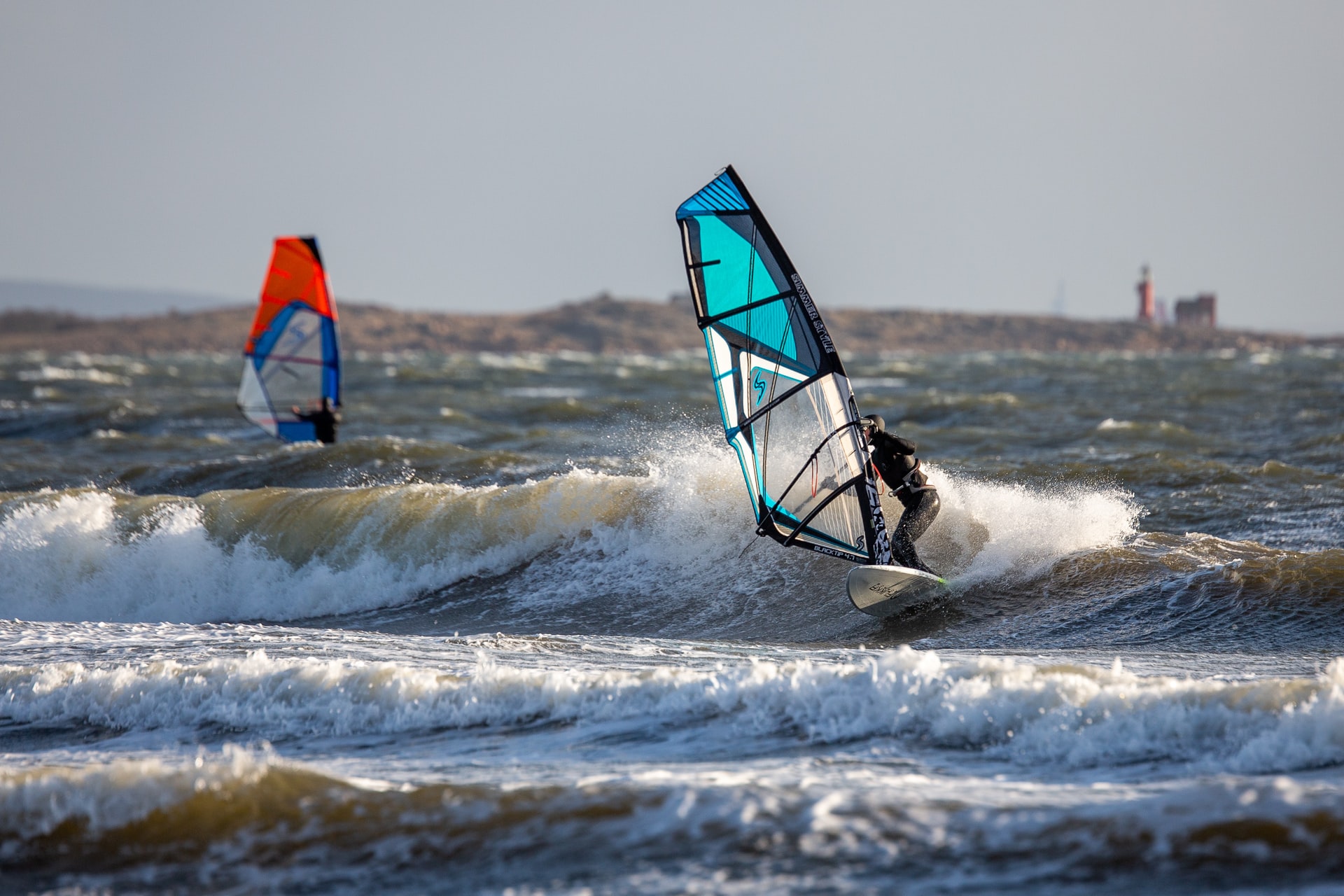
Surfing vs. Windsurfing: 8 Major Differences (& 4 Similarities)
-
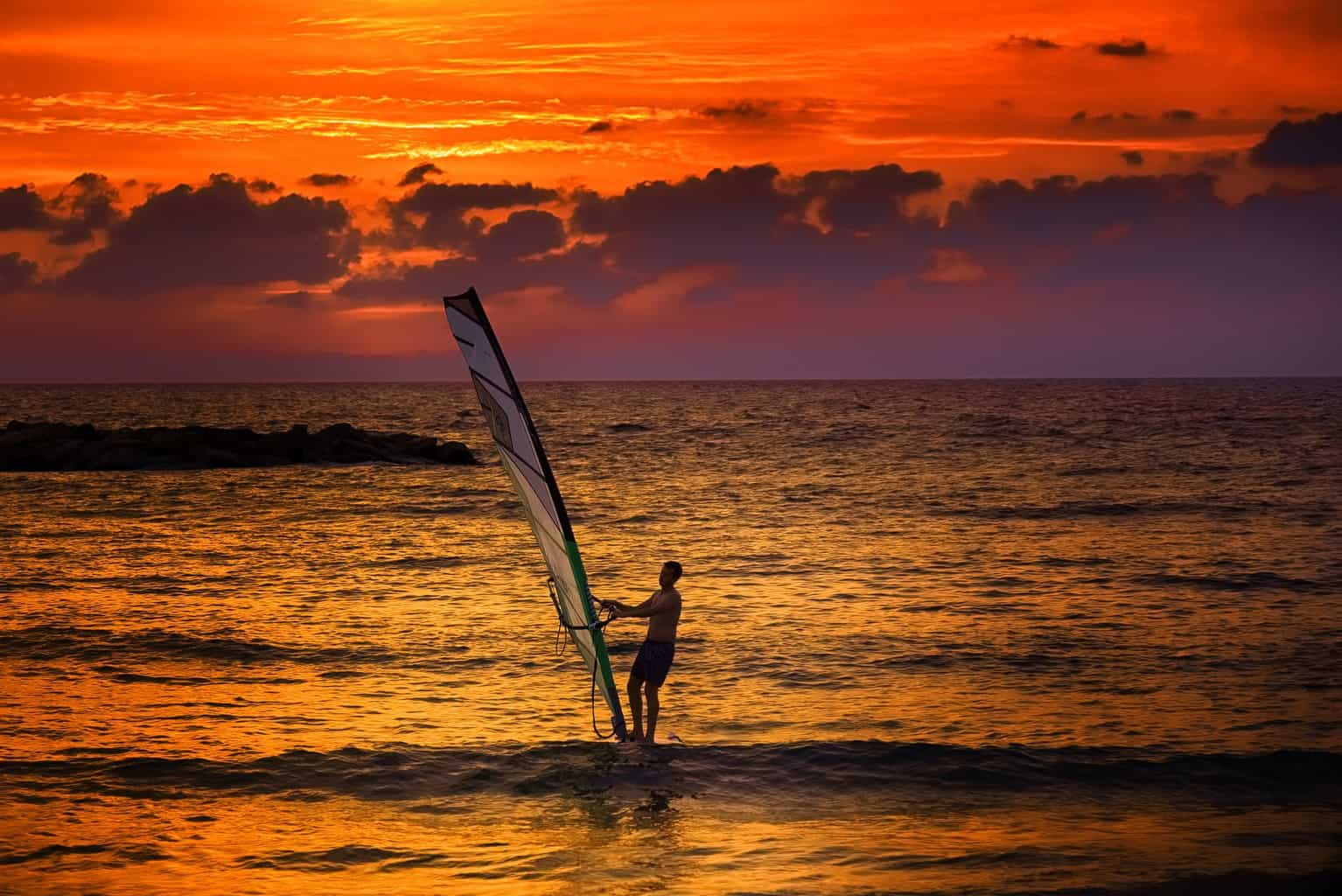
How Does Windsurfing Affect the Environment? (+8 Practical Tips)
-
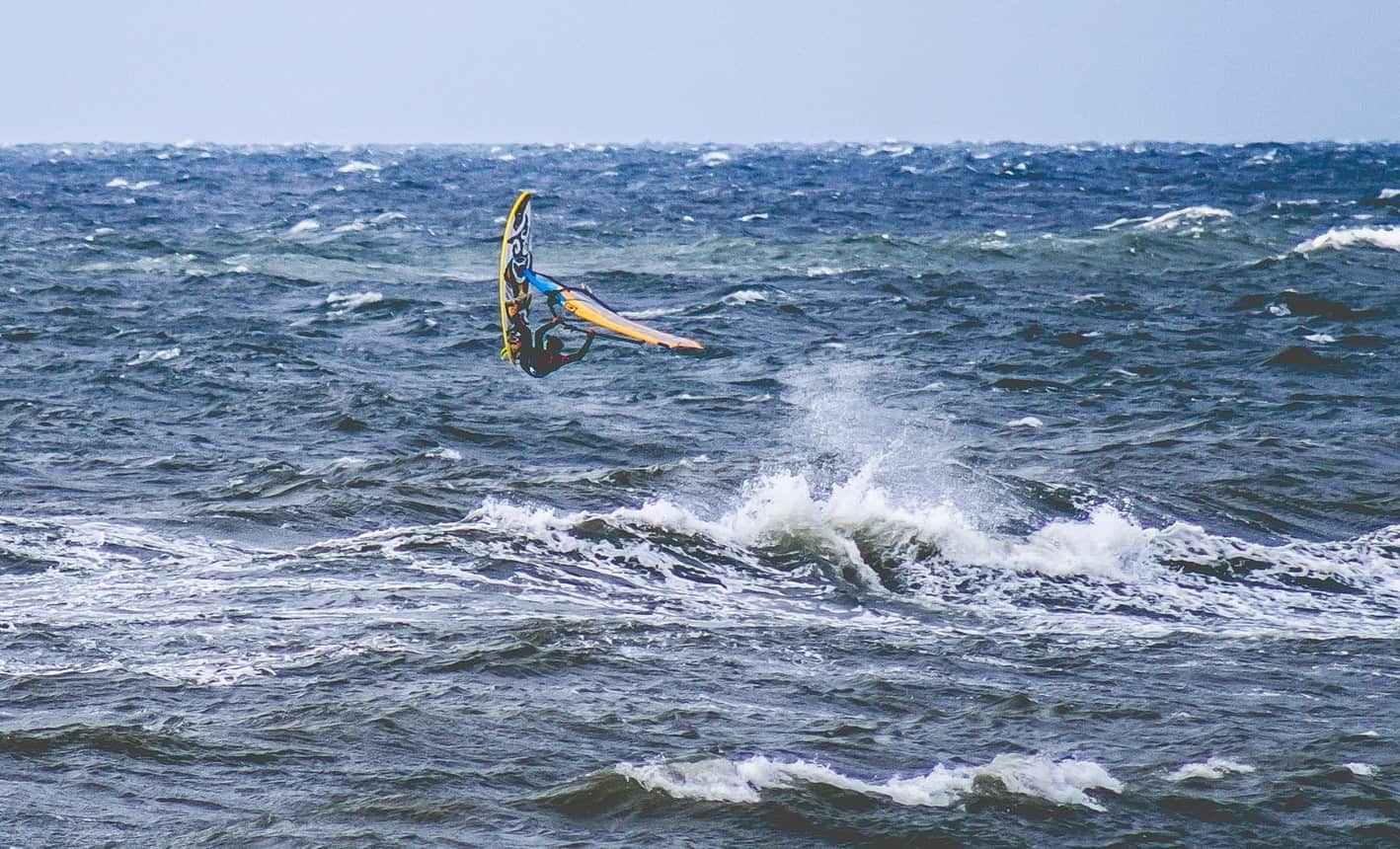
Is Windsurfing Dangerous? 14 Risks (& How to Avoid Them)
-
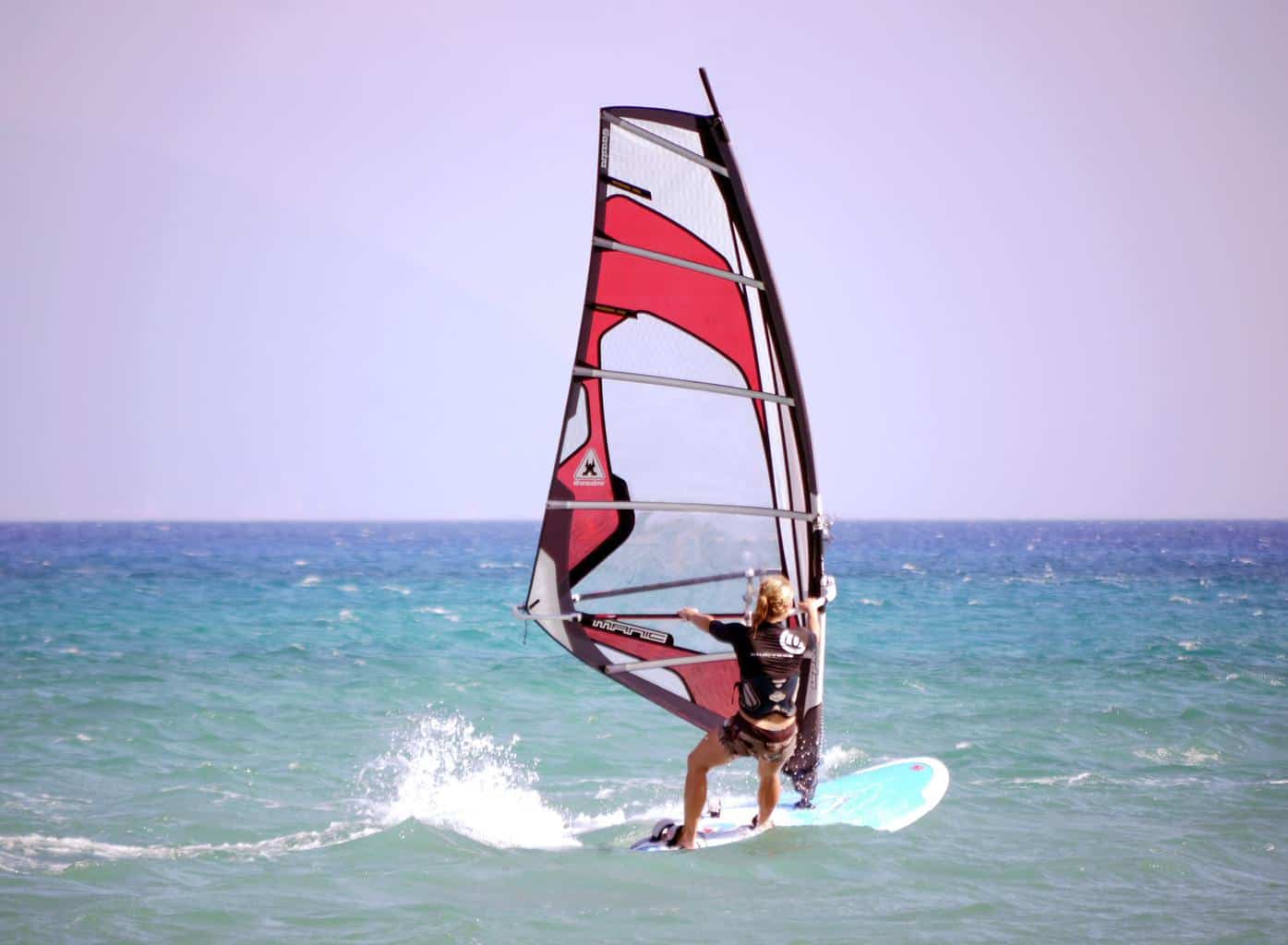
Windsurfing – 7 Common Beginner Questions (Answered)
-
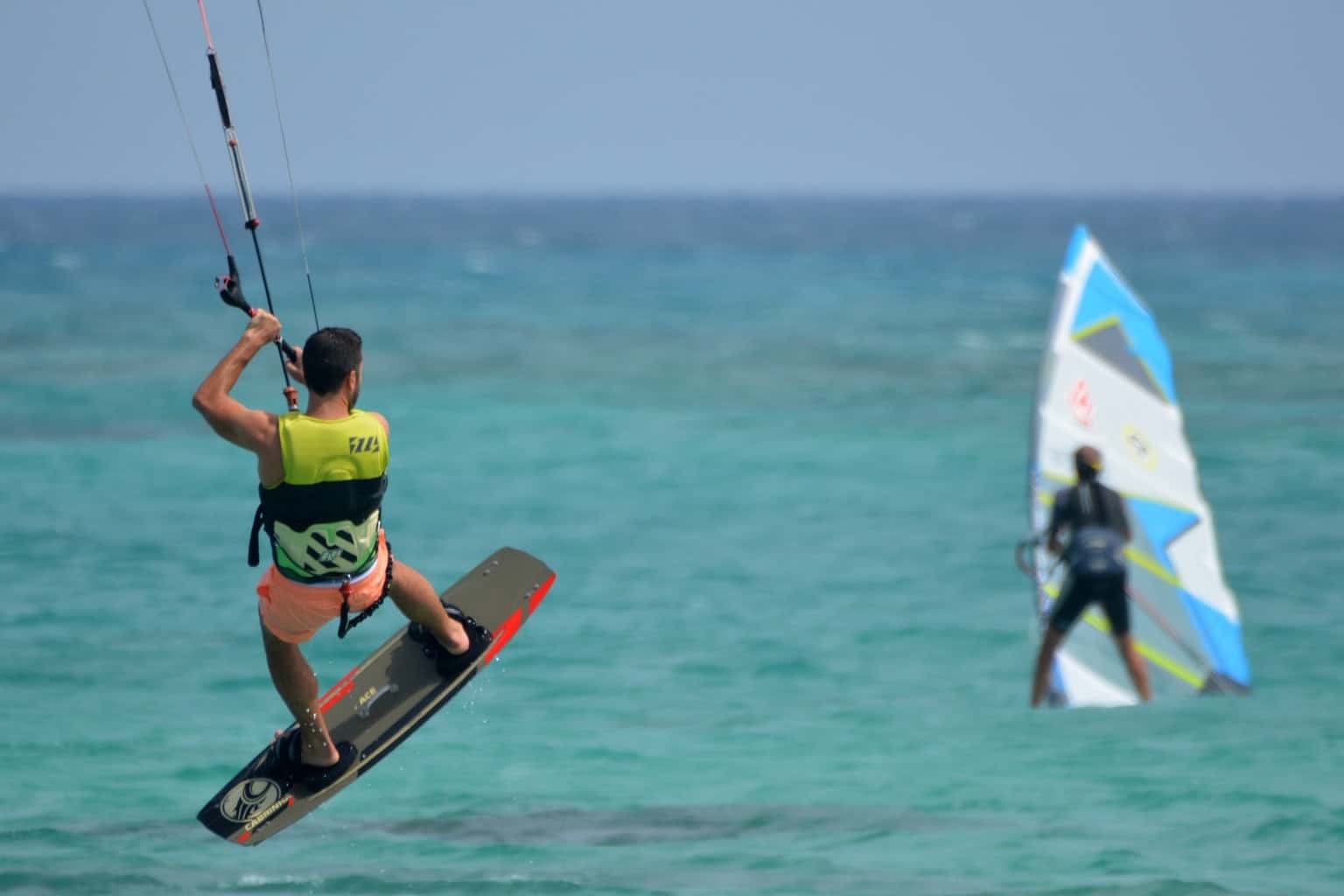
Is Windsurfing Faster Than Kitesurfing? (An Honest Look at the Facts)
-
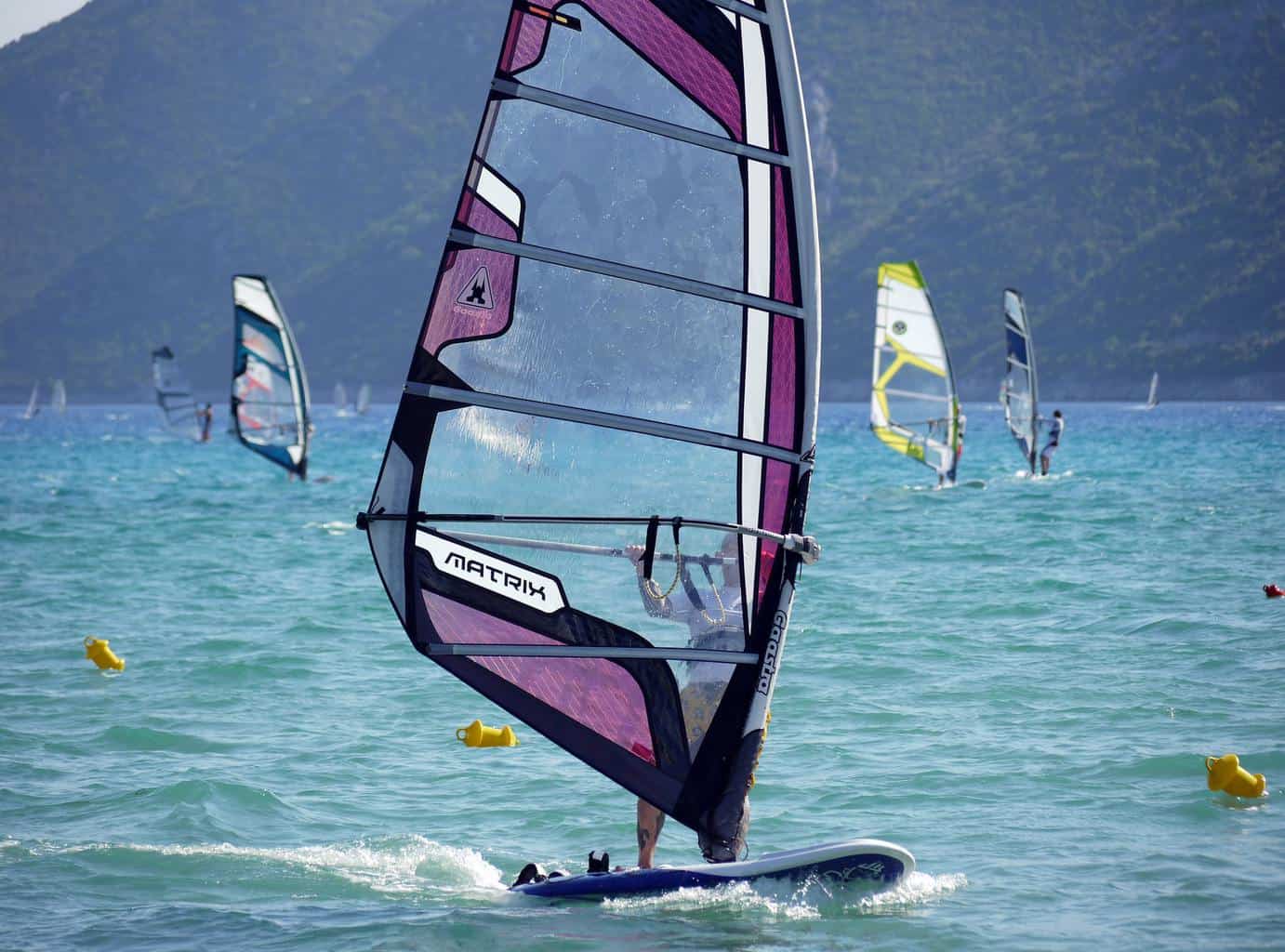
How to Choose the Right Windsurfing Sail Size (With Chart)
-
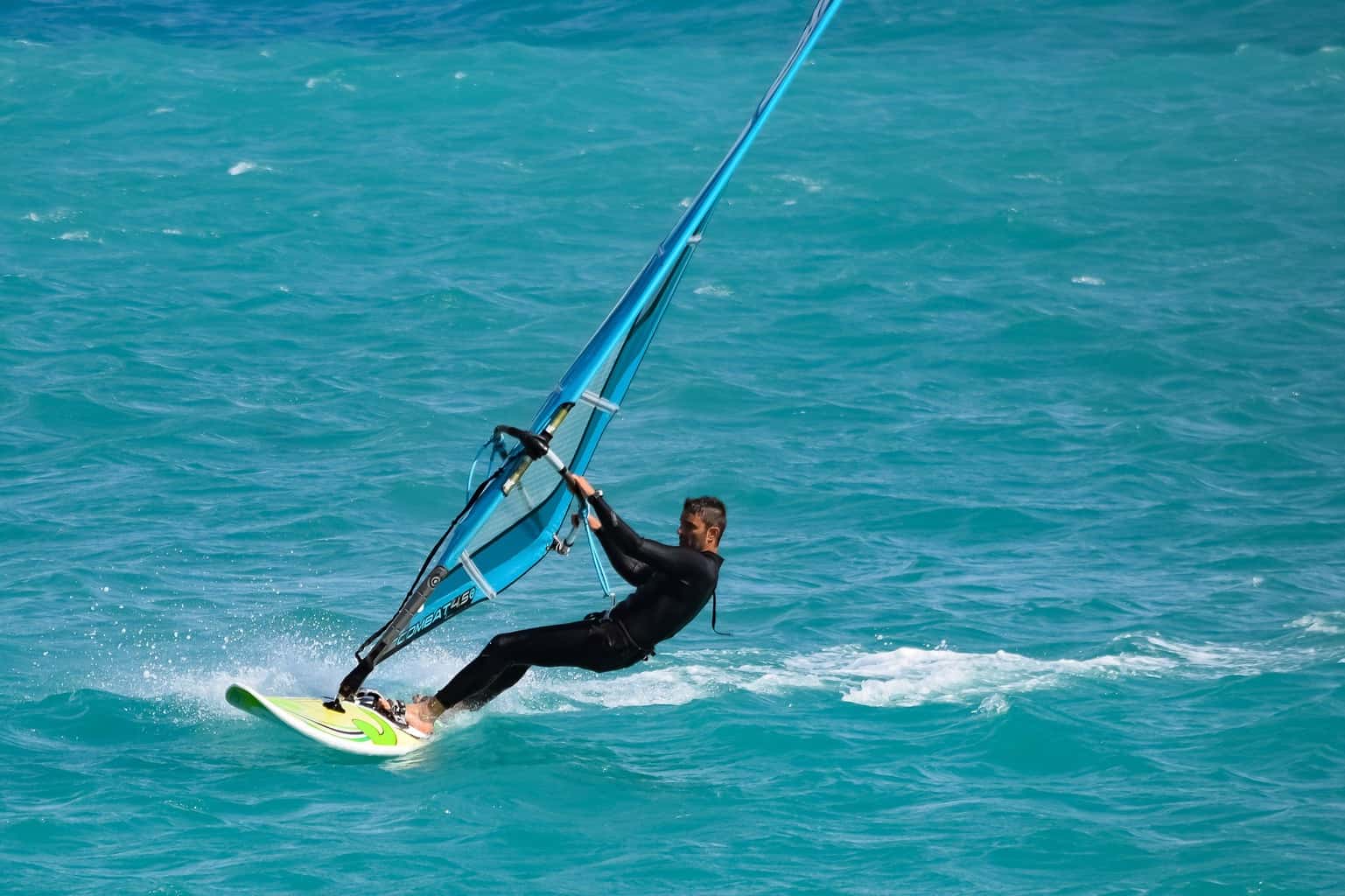
Windsurfing: How Much Downhaul Is Needed? (Essential Facts)
-
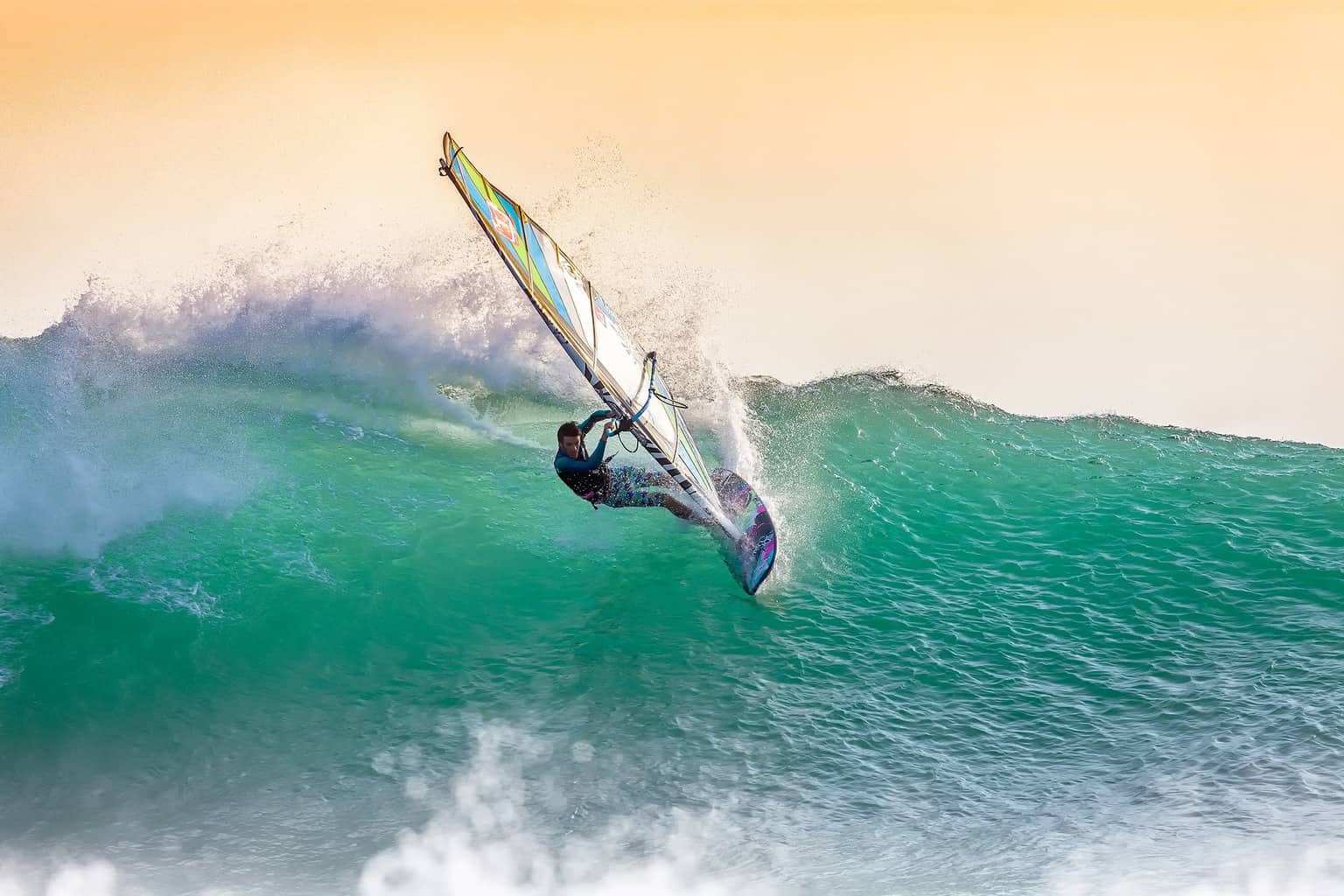
Is Windsurfing an Extreme Sport? (All You Need to Know)
-
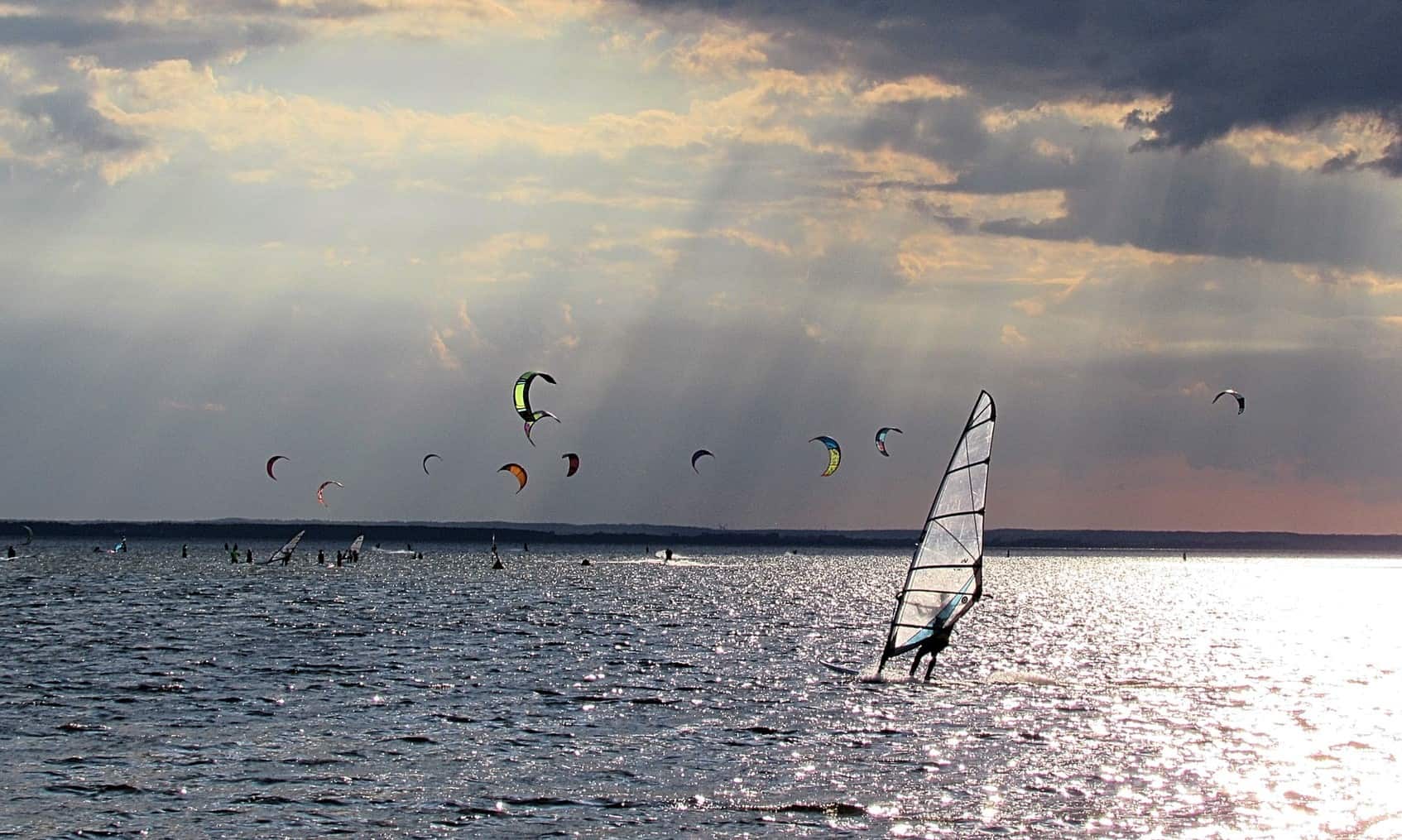
Is Windsurfing Easier Than Kitesurfing? (An Honest Comparison)
-
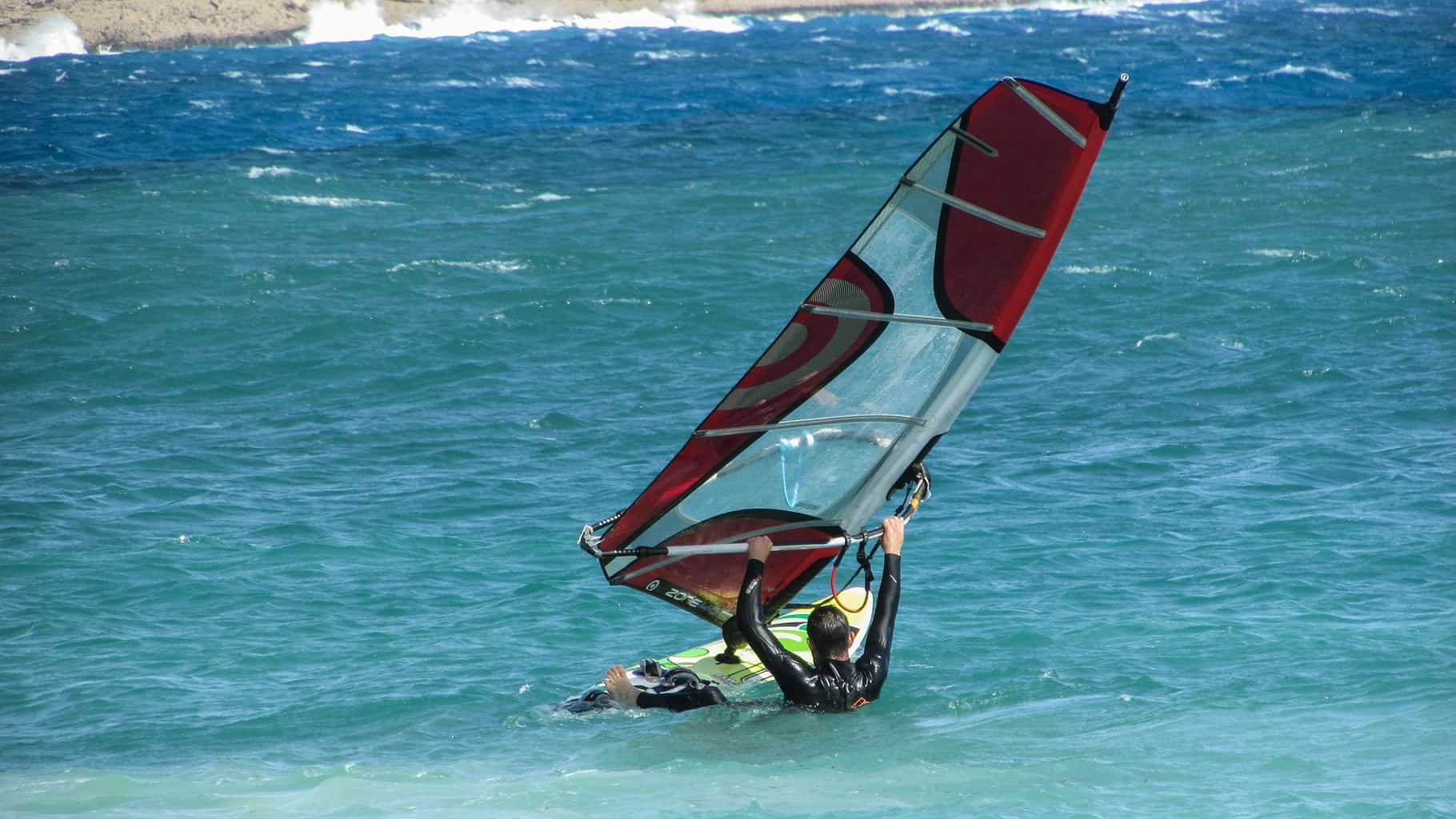
Is Windsurfing Harder Than Surfing? (Honest Comparison)
-
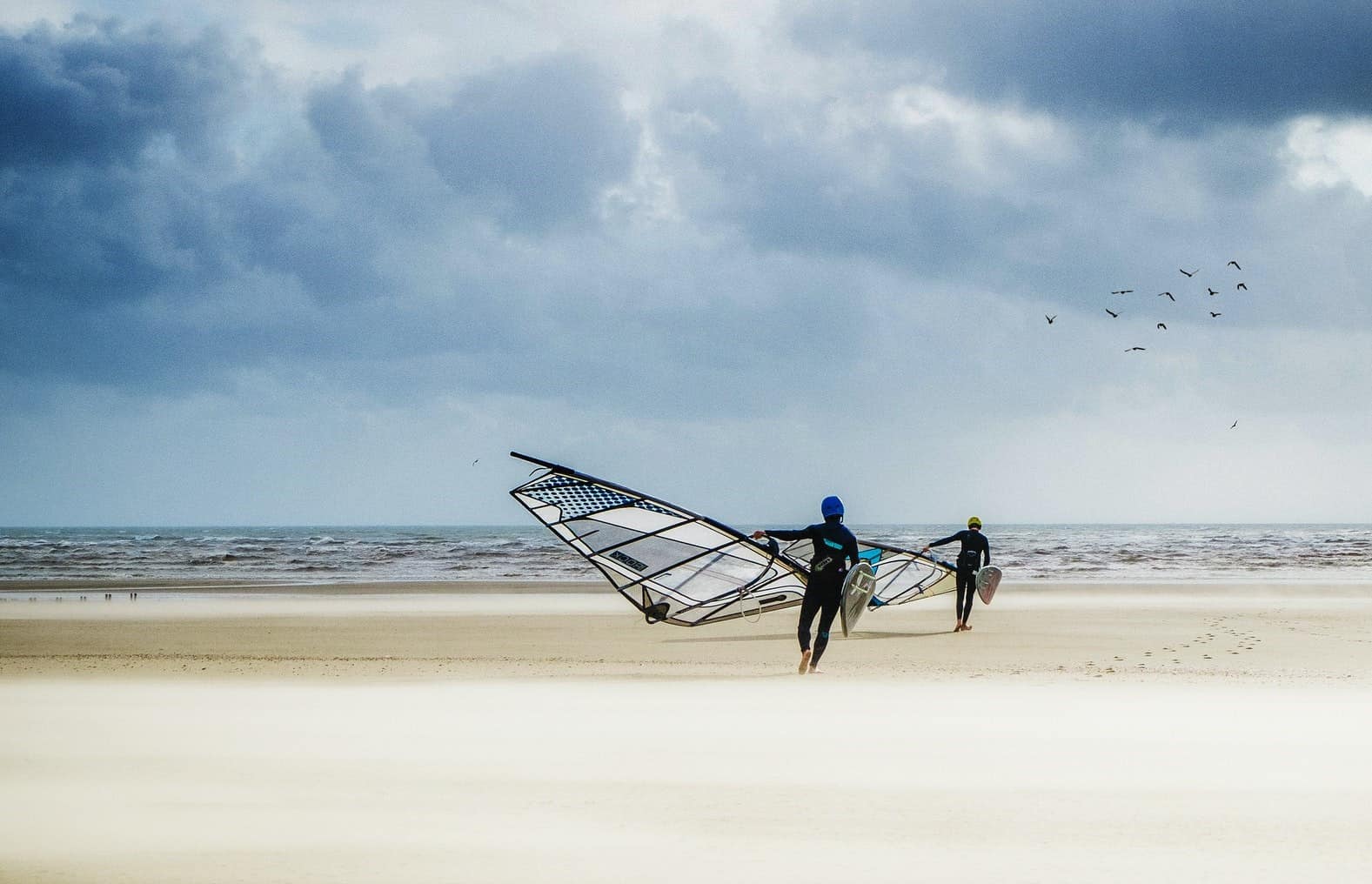
Is Windsurfing Still Popular? (An Insider’s Look at the Facts)











